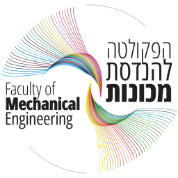Predicting the propagation of shock waves in tunnel-like structures is crucial for various engineering applications, including supersonic flight, blast protection, and underground explosions. However, the predictive tools currently available to engineers remain limited in their ability to accurately capture the dynamics of shock waves in these environments. To address this gap, we conduct experiments using a shock tube with an unusually long test section, allowing us to track shock wave propagation over extended distances using both optical and pressure measurements. These experimental results are then compared with numerical simulations and theoretical models to refine and develop new predictive methods. Our research began with a fundamental study of shock wave propagation through an abrupt area expansion, modeled as a backward-facing step. By analyzing the evolution of the shock front far downstream from the expansion region, we derived a simple empirical relation to predict the shock velocity beyond the step, offering a practical engineering tool for such scenarios. Building on this work, we are now investigating the complementary case of shock wave propagation through an area contraction with various geometric patterns, enabling us to develop a more comprehensive understanding of shock dynamics when encountering sudden changes in tunnel cross-section. Beyond these studies, we are also exploring more complex cases of shock-wave–structure interaction. The first focuses on how shock waves interact with localized disturbances and rough walls, particularly the attenuation and reflection phenomena that occur as they propagate along uneven surfaces. As a starting point, we examine a single roughness element, modeled as a sine-wave-shaped contraction, to gain insights into the mechanisms governing shock wave interactions in tunnels with more intricate
geometries. The second study examines shock interactions with porous tunnel walls, where partial flow exhaust occurs. This work aims to validate theoretical models suggesting that wave behavior post-impingement can be characterized by a single parameter dependent on the properties of the porous medium. Together, these studies contribute to a more complete framework for predicting and controlling shock wave behavior in tunnel-like environments, with implications for both fundamental research and practical engineering applications.
The seminar is part of the monthly seminar series, presented in English by graduate students of the Mechanical Engineering Faculty for graduate students.
The seminars are scheduled on the first Sunday of the month, 12:30-13:00 (seminar), 13:00-13:30 (lunch).






